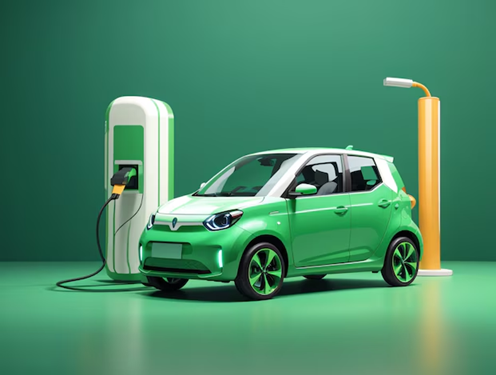A Step Toward Green Mobility
India’s automobile industry is undergoing a dramatic transformation, with electric vehicles (EVs) emerging as the future of mobility. While luxury electric cars often grab headlines, the real revolution lies in affordable EVs that cater to the masses. For a price-sensitive market like India, the demand for electric cars under ₹5 lakhs is particularly strong. These budget-friendly options are not just eco-friendly but also economical, making them an attractive choice for first-time buyers, city commuters, and environmentally conscious consumers.
Why the Demand for Budget EVs Is Growing
The rising fuel prices and concerns over air pollution have created a shift in consumer preferences. More people are now looking for electric alternatives that reduce dependence on petrol and diesel. Additionally, government incentives and subsidies under the FAME India scheme (Faster Adoption and Manufacturing of Hybrid and Electric Vehicles) are encouraging buyers to make the switch.
Affordable EVs are essential because they bridge the gap between aspiration and accessibility. For millions of Indian households, an EV under ₹5 lakhs is not just a vehicle but a gateway to sustainable transportation.
Key Features Buyers Expect in This Segment
When it comes to electric cars priced below ₹5 lakhs, buyers have clear expectations:
-
Affordability: The upfront price has to remain accessible for middle-class families.
-
Practical Range: A driving range of 100–200 km per charge is often sufficient for city commuting.
-
Low Running Costs: Charging should be significantly cheaper than refueling with petrol or diesel.
-
Compact Size: Smaller dimensions make these cars ideal for crowded urban roads and tight parking spaces.
-
Basic Comfort Features: While luxury isn’t the priority, buyers still look for air conditioning, decent seating, and safety features.
Popular Electric Car Options Under ₹5 Lakhs
As of now, the market for full-sized electric cars under ₹5 lakhs is still limited. However, several compact EVs and quadricycles are making their presence felt in this category.
1. PMV EaS-E
One of the most talked-about budget EVs, the PMV EaS-E is a microcar designed for urban mobility. With a price tag starting around ₹4.8 lakhs, it offers a futuristic design in a compact package. The vehicle provides a range of up to 200 km on a single charge, making it practical for daily use.
2. Strom Motors R3
The Strom R3 is another small electric vehicle targeted at city commuters. This two-seater car has a quirky design and comes with smart features like touchscreen infotainment and GPS navigation. Priced at under ₹5 lakhs, it promises a range of about 120–200 km, depending on the battery pack.
3. Mahindra e-Alfa Mini (for commercial use)
While not exactly a family car, the Mahindra e-Alfa Mini is an electric rickshaw priced affordably at around ₹1.5–2 lakhs. It is primarily used for commercial passenger transport but highlights how EV adoption at the lower end of the market is growing rapidly.
4. Used EV Options
For buyers strictly looking for four-wheelers under ₹5 lakhs, the pre-owned EV market is also worth exploring. Models like the Mahindra e2o and older Tata Tigor EV variants are sometimes available in the second-hand market within this budget.
Advantages of Owning an EV Under ₹5 Lakhs
-
Cost Savings: The running cost per kilometer for an EV is just a fraction of that of petrol or diesel cars.
-
Government Subsidies: Buyers can benefit from state and central subsidies, which further reduce the effective purchase price.
-
Environment-Friendly: Zero tailpipe emissions contribute to cleaner air, especially in polluted urban centers.
-
Low Maintenance: Fewer moving parts mean lower maintenance costs compared to traditional vehicles.
Challenges in the Budget EV Segment
While the market is promising, a few challenges need to be addressed:
-
Limited Choices: The number of cars under ₹5 lakhs is still very small.
-
Charging Infrastructure: The availability of public charging stations is growing but still uneven across cities.
-
Performance Constraints: Budget EVs may not offer the speed, acceleration, or luxury of higher-end models.
-
Consumer Awareness: Many buyers are still unfamiliar with the benefits and practicalities of owning an EV.
Government Support for Affordable EVs
The Indian government is playing a crucial role in promoting EV adoption. Through the FAME-II scheme, buyers can avail subsidies on electric two-wheelers, three-wheelers, and cars. Several states, including Delhi, Maharashtra, and Gujarat, also offer additional incentives, road tax exemptions, and registration fee waivers. These initiatives make EVs more accessible to the average buyer.
The Road Ahead
The demand for electric cars under ₹5 lakhs is expected to grow rapidly in the next few years. As battery costs fall and manufacturers scale up production, more options will enter the market. Startups and established automakers alike are working on compact, affordable models that can cater to the vast Indian middle class.
In addition, the expansion of EV charging infrastructure and innovations in battery-swapping technology will make these vehicles even more practical. With increasing awareness about climate change and rising fuel prices, the shift toward budget-friendly EVs seems inevitable.
Final Thoughts
The era of affordable electric cars in India is just beginning. While the market currently offers only a handful of options under ₹5 lakhs, the trend points toward greater availability in the near future. For buyers who want a clean, economical, and practical mode of transport, these budget EVs provide the perfect entry point into the electric mobility revolution.
With supportive government policies, falling battery costs, and growing consumer interest, the dream of widespread EV adoption in India is set to become a reality—and affordable cars under ₹5 lakhs will play a pivotal role in that journey.

